Your 7 Chakras, Explained—Plus, How To Tell if They’re Blocked
Consider this your official guide to chakras for beginners. Ahead, we dive into the meaning of each one, how to unblock the chakras, and how chakra alignment can improve your overall well being.
What are chakras? How do chakras work?
Chakras are energy centers that exist throughout the body and correspond with different organs, emotions, and areas of our life and identity. These seven chakras all have corresponding chakra colors, chakra symbols, and chakra stones that align with each.
- Ambi Kavanagh, Reiki practitioner, astrologer, and author of Chakras & Self-Care
- Fern Olivia, yoga instructor and Reiki healer
- Song Atthajaroon, spiritual guide, yogi, Reiki energy healer, and mindfulness facilitator
Literally speaking, the word "chakra" from Sanskrit translates to "wheel" or "disk," but it references a spiritual energy center within the human body, of which there are seven along the spine, and through the neck and the crown of your head, according to the Chopra Center.
"The chakra system originated in India between 1,500 and 500 B.C. in the oldest text called the Vedas," says Fern Olivia, a reiki healer and yoga instructor. The Vedas are the earliest Sanskrit literary records and the most ancient scriptures of Hinduism. As for the purpose of the seven chakras? "They each correspond to specific organs as well as physical, emotional, psychological, and spiritual states of being and influence all areas of your life," says Olivia. "Within these chakras is 'prana,' or the ultimate pure healing energy1, that's all around us and within us, to keep us healthy, happy, and vibrant."

{{post.sponsorText}}
While there isn't much scientific evidence that supports the physical manifestations of spiritual energy, the study of the seven chakras and chakra alignment—whether it be through meditation, reiki, or yoga—is rooted in the belief that "when the chakras are open and aligned, our energy is constantly free-flowing, allowing prana to flow through them," says Olivia. They're said to enable one to remove negative energy.
What blocks your chakras?
Learning how to unblock chakras begins with identifying what can cause them in the first place.
Blocked chakras are usually formed during periods of high stress and conflict or form as a result of an unhealthy or toxic lifestyle. Persistent negative emotions, a lack of physical activity, poor sleep, and stress are just a few of the causes of a blocked chakra.
A blocked chakra can reveal itself in a number of ways. You may find yourself in a never-ending loop of anxious thoughts, or you may feel pain in a specific area of your body, says spiritual guide, reiki healer, and mindfulness facilitator Song Atthajaroon.
“The chakras blow life force energy through [the body], so when chakras become blocked, it can affect our physical body as well as our mental, emotional, and spiritual bodies,” says Atthajaroon. “For instance, with the root chakra, if there's lots of fear and scarcity around finances, this means it’s blocked,” explains Atthajaroon.
Because the chakras flow positive energy throughout, when one chakra becomes blocked, it can negatively affect the other six.
“We want to make sure that there's flow through each of the chakras so that there's balance in different areas of our life,” says Atthajaroon. “Chakra healing helps with not just physical tension [and] pain in the body. It can help with trapped emotions, as well as healing certain areas of our life.”
How to unblock chakras
Surrounding yourself with the element, stones, or colors associated with each chakra can aid the unblocking process, says Atthajaroon. If your throat chakra is blocked, for example, meditating while holding throat chakra stones or dressing yourself up in something blue–its corresponding chakra color–can help you activate and unblock it.
According to Atthajaroon, meditating, yoga, positive affirmations, reiki self-healing, and even immersing yourself in a sound bath can also help you in the process of unblocking chakras.
“The chakras are emitting vibrations, so when you go to a sound bath, for instance, those [vibrations] can activate those chakras that are blocked and release energy.”
Why the chakras need to be balanced
While each chakra has its own distinct properties, they're all thought to work as a system. That means if one's out of balance, it affects all the rest, hence why chakra balancing is so paramount. For instance, if you have a blocked throat chakra, you might also experience difficulties with your heart chakra—since you’re not able to communicate what you feel and are likely sitting with those emotions.
If you have signs of multiple blocked chakras, though, just know that it's totally normal—and any good yoga class or healer will work to align all of them at once, creating a clear channel for prana to flow from head to toe.
Now that we’ve explored the mechanics of how chakras flow energy throughout the body, we can delve into the meanings of each chakra. Read on to learn more about each chakra, including signs they may be blocked and tools you can use to open them back up.
Each of the 7 chakras and their meanings
1. The Root Chakra
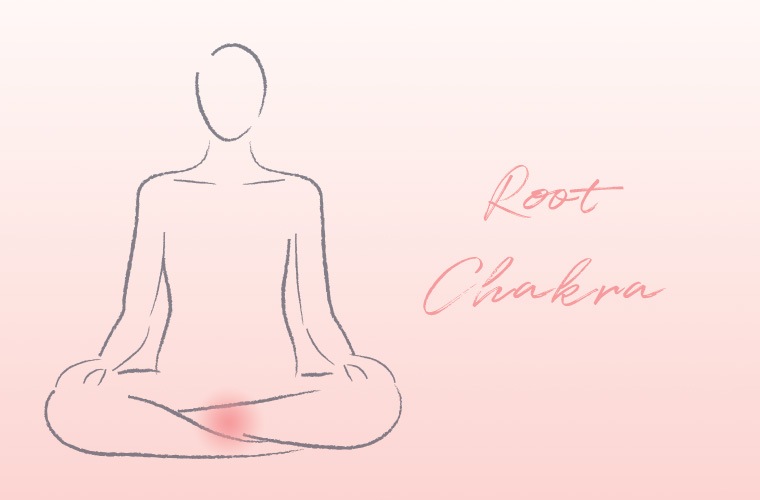
Location: the base of the spine, the pelvic floor, and the first three vertebrae
What it is: Think about your root chakra (Muladhara in Sanskrit) as the foundation of a house, but for your body—when in balance, it's sturdy, stabilizing, and supportive. As such, it's responsible for your sense of security and survival, says Olivia. It's also connected to whatever you use to ground yourself, including basic needs, such as food, water, shelter, and safety, as well as your more emotional needs, such as letting go of fear and feeling safe. As you well know, when these needs are met, you tend to worry less.
When it's blocked: A variety of ailments can occur from blockages, including anxiety disorders, fears, or nightmares, adherents say. Physically, the first chakra is associated with problems in the colon, with the bladder, with secretion, or with lower back, leg, or feet issues.
"Like any of the chakras, the root chakra can be underactive or overactive," says Ambi Kavanagh, reiki healer, astrologer, and author of Chakras & Self-Care: Activate the Healing Powers of Chakras with Everyday Rituals. "'Underactive’ means it's closed or blocked in some way or not spinning properly. In this case, we may feel anxious, insecure, and unsafe—and, as a result, be ungrounded,” Kavanagh adds. “If overactive, it's as though the energies are working overtime and are too attached to the physical and material world in ways which are unhealthy."
Overindulging in physical pleasures like food or sex, becoming too attached to money, and an obsession with feeling secure are all markers of an overactive root chakra.
Color: Red
Element associated with it: Earth
Crystals associated with it: Red jasper, onyx, hematite
Yoga poses that activate it: Wide-legged forward fold, malasana squats, mountain pose
2. The Sacral Chakra
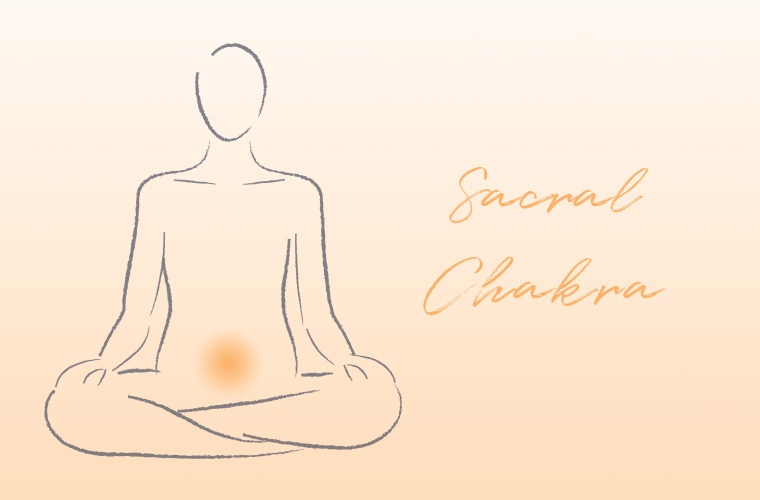
Location: above the pubic bone and below the navel
What it is: Consider the second chakra, or Svadhisthana, the most fun out of the seven. "This chakra houses our emotions, passions, and pleasures—the things that emotionally satiate us and give us joy—and is considered the creative and sexual energy center of the body," says Kavanagh.
When your sacral chakra is aligned, you'll likely feel great: You're friendly, passionate, and successfully fulfilled while also eliciting feelings of wellness, abundance, pleasure, and joy. By honoring your body and expressing yourself creatively, you're keeping the energy wheels turning and fluid.
When it's blocked: When you're feeling uninspired creatively or have some emotional instability, things may be misaligned, requiring some sacral chakra healing. Likewise, this can also be associated with physical sexual dysfunction while also potentially experiencing fear of change, depression, or addiction-like behaviors.
"When underactive, [someone may have] a low libido, a lack of joie de vivre, or have hormonal and fertility issues," says Kavanagh. "When overactive, we may [develop substance use disorders], whether sex or other addictions, and can also experience lots of emotional fluctuations from big highs to lows, like an emotional rollercoaster."
Color: Orange
Element associated with it: Water
Crystals associated with it: Carnelian, tiger's eye, sunstone
Yoga poses that activate it: Pigeon pose, goddess pose, warrior II
3. The Solar Plexus Chakra
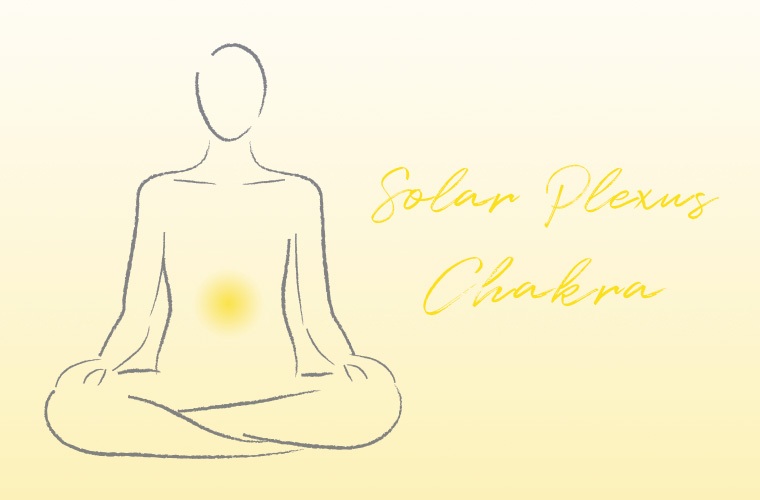
Location: from the navel to about the ribcage; associated with all things metabolic, digestive, and stomach-related
What it is: With its Sanskrit name, Manipura, meaning "lustrous gem," the third chakra is said to be your source of individual power, ruling over self-esteem. Or, as Olivia says, it is the "action and balance chakra that focuses on individual willpower, personal power, and commitment." (Don't confuse it with your "third eye," which is the sixth chakra—more on that in a minute.)
When it's blocked: You can experience low self-esteem, have difficulty making decisions, and may have anger or control issues. Olivia notes that it's not just feeling bad about yourself, but also may lead you to outwardly express apathy, procrastination, or that you're able to be taken advantage of easily. Likewise, you'll also possibly have a tummy ache of some kind, such as digestive issues or gas.
According to Kavanagh, a blocked solar plexus chakra will make us struggle with self-doubt and being our highest, most authentic selves. But the flip side isn't much better: "Signs of an overactive solar plexus include a rampant ego—being power hungry and egotistical, resulting in manic behavior and hyperactive energy," she says.
Color: Yellow
Element associated with it: Fire
Crystals associated with it: Citrine, pyrite, amber
Yoga poses that activate it: Boat pose, twists, warrior III
4. The Heart Chakra

Location: the center of the chest, encapsulating the heart, the thymus gland (which plays a vital role in your endocrine and lymphatic system), the lungs, and the breasts
What it is: As the central chakra, the fourth chakra (or Anahata) represents where the physical and the spiritual meet, according to the Chopra Center. And as its name implies, it is all about love. "It's the awakening to spiritual awareness, forgiveness, and service," says Olivia. It's believed that when your heart chakra is aligned and balanced, love and compassion are flowing freely—both in terms of giving it out and getting it back. "Your good vibes are practically contagious," says Olivia.
When it's blocked: A closed heart chakra can give way to grief, anger, jealousy, fear of betrayal, and hatred toward yourself and others."When underactive, we may be emotionally closed off and find it difficult to get over past hurts and forgive," says Kavanagh. "As a result, it could become hard to give and receive love, which will have [an unideal] effect on our relationships."
If overactive, we may become too loving. Off the cuff, that might not sound like a problem, but Kavanagh points out that it's usually masking co-dependency. "This will have a ripple effect on our relationships, being overly dependent, needy, jealous, and possessive, with a lack of boundaries," she says.
Color: Green and pink
Element associated with it: Air
Crystals associated with it: Rose quartz, jade, malachite
Yoga poses that activate it: Back bends, reverse plank, upward-facing dog
5. The Throat Chakra
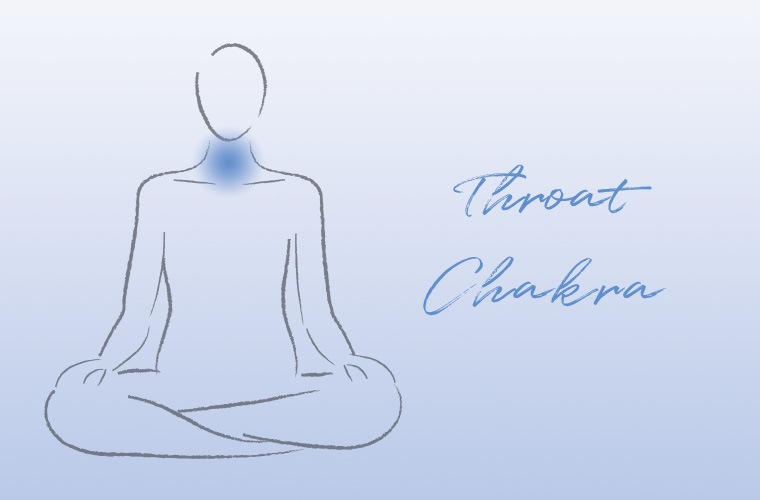
Location: your throat; is associated with the thyroid, parathyroid, jaw, neck, mouth, tongue, and larynx
What it is: Have zero problem saying how you feel? Your fifth chakra, which is all about speaking your inner truth—or, specifically, ensuring that your inner truths are properly communicated—is likely well-balanced. With the Sanskrit name of Vishuddha, the throat chakra rules all communication. It's the first of the three solely spiritual chakras (as opposed to the lower ones, which manifest themselves in a more physical way), according to Olivia. When this chakra is in check, you're able to fully listen as well as speak and express yourself clearly.
When it's blocked: "In the case of an underactive throat chakra, a person may find it hard to truly express themselves," says Kavanagh. "They may literally swallow their words, and in doing so, swallow their true feelings."
In addition to having trouble speaking your truth, you find it hard to pay attention and stay focused or fear judgment from others—which can further hinder your ability to keep it real. Physically, this blockage can manifest itself as a sore throat, thyroid issues, neck and shoulder stiffness, or tension headaches.
"Signs of an overactive throat chakra include talking too much, being overly domineering in conversations, and being overly critical or judgmental of others," Kavanagh says.
Color: Blue
Element associated with it: Ether
Crystals associated with it: Lapis lazuli, aquamarine, kyanite
Yoga poses that activate it: Fish pose, plow pose, shoulder stand
6. The Third Eye Chakra
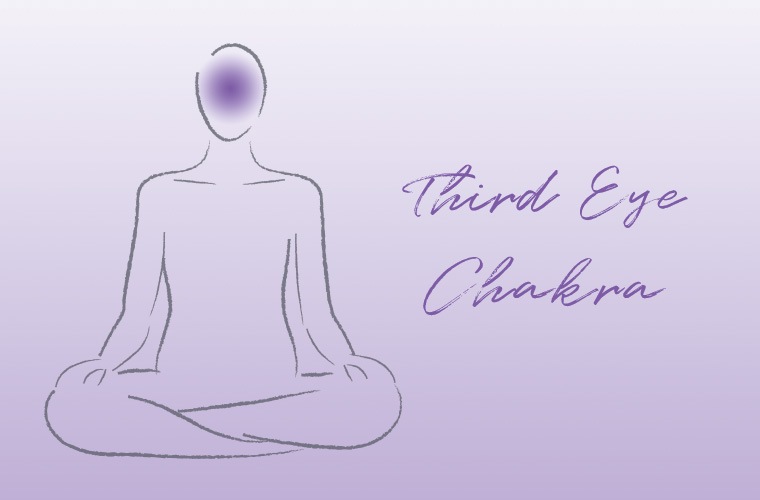
Location: between the eyebrows; rules organs including the pituitary gland, eyes, head, and lower part of the brain
What it is: Don't let its name confuse you. The third eye, or Ajna chakra, is actually your sixth chakra, and it reportedly governs your intuition—plus the ability to recognize and tap into it. What's more, the third eye is also said to be responsible for all things between you and the outside world, serving as a bridge between the two. It allows you to cut through any illusions and drama to see the clear picture.
When it's blocked: You may have trouble accessing your intuition, trusting your inner voice, recalling important facts, or learning new skills. And if your lower chakras—the root, sacral, solar plexus, and heart chakras—are unbalanced, your third eye will likely be as well, which may cause you to act more judgmental, dismissive, and introverted.
"With an underactive brow chakra, we may overly intellectualize things and try to ‘work things out,’ which can result in feeling both overwhelmed and exhausted and disconnects us from the power of our own intuition," says Kavanagh. "As a result, we may be quite fearful and distrustful of the process of life and have anxiety over the future."
A third eye blockage is associated with a broad range of issues, including depression, anxiety, and a more judgmental attitude—while physically, it's said to cause headaches, dizziness, and a slew of other brain health issues. Meanwhile, learning how to open your third eye can lead to an overactive imagination and a mind that runs away with us. "Sometimes, with an overactive brow chakra, we may even find our clairvoyant skills are so active that they can overwhelm and frighten us," Kavanagh says.
Color: Indigo
Element associated with it: Light
Crystals associated with it: Amethyst, purple fluorite, labradorite
Yoga poses that activate it: Child's pose, dolphin pose, eagle pose
7. The Crown Chakra
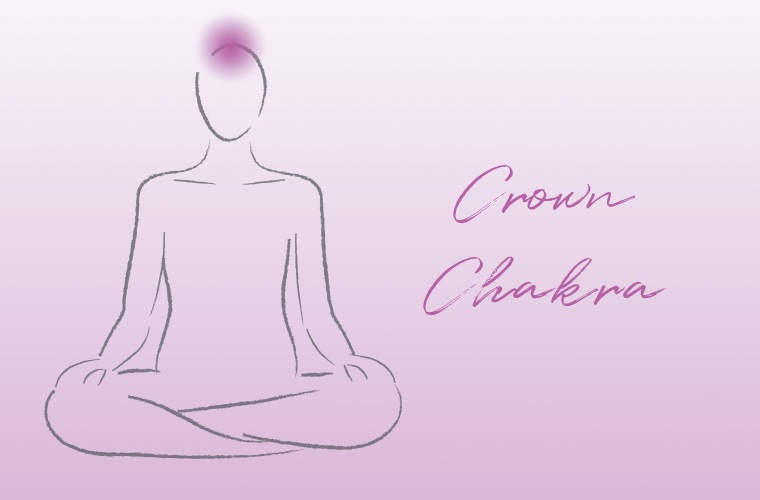
Location: the top of the head
What it is: Known in Sanskrit as Sahasrara, or the “thousand petal lotus” chakra, the crown is the center of enlightenment and our spiritual connection to our higher selves, others, and, ultimately, the divine, according to the Chopra Center. When aligned, the realizations that occur within you are said to be along the lines of pure consciousness—undivided and all expansive. Basically, bigger than yourself and part of one giant universe.
When it's blocked: "With an underactive crown chakra, we may feel apathetic and listless, almost energetically numb and feel a sense of disconnection which results in a lack of direction and purpose in life," says Kavanagh. Or, you might feel like your regular self—just not in an exalted state of spiritual connection and enlightenment, which is totally okay and seriously normal.
Unlike the other chakras, the crown chakra is often only opened up fully through specific yogic or meditative exercises or at certain times—which is not a skill set you can call upon at any given moment. You may be able to get a taste of it, though, through daily practices—anything from meditation, and prayer, to moments of silence and gratitude—to have those moments of spiritual connection.
"An overactive crown chakra often manifests as a desire for material belongings which never seems capable of being satisfied," says Kavanagh. Greed, superficiality, and arrogance often result in a disconnection from others as well as the universe.
Color: Violet
Element: None
Crystals associated with it: Selenite, clear quartz, lepidolite
Yoga poses that activate it: Headstand, tree pose, savasana
FAQs:
What religion believes in chakras?
Chakras are primarily associated with Hinduism, as they first appeared roughly 3,500 years ago in a collection of religious Hindu texts and hymns called the Vedas. While not canon to Buddhism, chakras are commonly studied by Tantric Buddhists.
How many chakras are there?
There are seven chakras found throughout the body.
They include–starting from the base of the spine up to the top of our head–the root chakra, the sacral chakra, the solar plexus chakra, the heart chakra, the throat chakra, the third eye chakra, and the crown chakra.
What is the purpose of the chakras?
Chakras are energy sources found throughout the body that correspond with the different aspects of our lives and identities. They are believed to flow positive energy throughout our mind, body, and spirit. Balancing and unblocking chakras, then, are said to help us achieve spiritual alignment, ease physical tension, and provide mental clarity.
How do you tell if a chakra is blocked?
A blocked chakra can present itself in several different ways. You may feel physical tension or pain in the area of the body where a certain chakra lies, or you may feel consumed by a specific negative emotion, says Atthajaroon.
“If there's tension and tightness, or an ‘off’ feeling, or something feels misaligned, that's when people usually are able to tell their chakra is off balance and can also look at the areas of their life,” she says.
What happens when all the chakras are open?
When all of the seven chakras are opened and aligned, positive energy is able to flow throughout, and negative energy is easily dispelled. Opened chakras help us to receive positive energy from others, thereby improving our mental, physical, and spiritual well-being.
Be warned, however, that chakras can be too open.
Atthajaroon likens a too-open chakra to a flower whose petals have been bolted down on each side, leaving its center exposed and vulnerable.
“For instance, somebody who may be an empath may have a huge, open heart chakra,” explains Atthajaroon. “They tend to end up in relationships with narcissists that have blocked our chakras, and so in that sense, it can be a vulnerability for somebody who has an open heart chakra. Somebody else can either manipulate or use that person.”
Looking for a yoga flow to help unblock a chakra? Check out this video for a 20-minute session that’ll help boost focus and find balance:
- Srinivasan, Tm. “Prana and electrons in health and beyond.” International journal of yoga vol. 7,1 (2014): 1-3. doi:10.4103/0973-6131.123469
Loading More Posts...